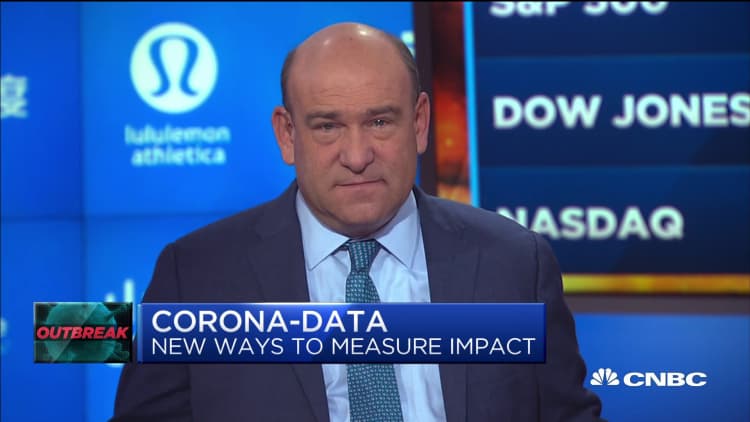The number of reported coronavirus cases continues to grow as the outbreak spreads around the world, according to the latest data collected by researchers at Johns Hopkins University.
But that's just the number of reported and confirmed cases from an outbreak that has posed a series of challenges for researchers trying to collect reliable data on the spread and severity of the new disease.
"There is no way to get everything," said Dr. Este Geraghty, chief medical officer at ESRI, a mapping software company that is working with researchers at Johns Hopkins to map the outbreak. "We're always going to have things missing in the data."
Some researchers believe the actual number of coronavirus cases may be much higher that the reported data.
Coronaviruses are a large family of viruses that usually infect animals but can sometimes evolve and spread to humans. Symptoms in humans include fever, coughing and shortness of breath, which can progress to pneumonia.
Physicians recommend basic hygiene, including washing hands with soap and water and avoiding touching eyes, nose or mouth.

The challenge of data collection in any outbreak starts from the moment someone contracts the targeted illness. Some of those infected may be reluctant or unable to go to a hospital or clinic; those cases will go unreported until they do so. Others may have been infected with the disease and show no symptoms — but may still be able to transmit the virus to others.
The result is that there is no "official" tally of cases, and the number of reported cases at any moment in time can change rapidly.

One reason for frequent changes in the numbers is that a shortage of test kits in some areas has meant that health-care workers have had to resort to other methods of diagnosing the illness, and those methods may produce false positives that are later deleted from the latest tally.
— Reporting by Berkeley Lovelace Jr. and John Schoen; data visualizations by John Schoen and Nate Rattner. Reuters contributed.






